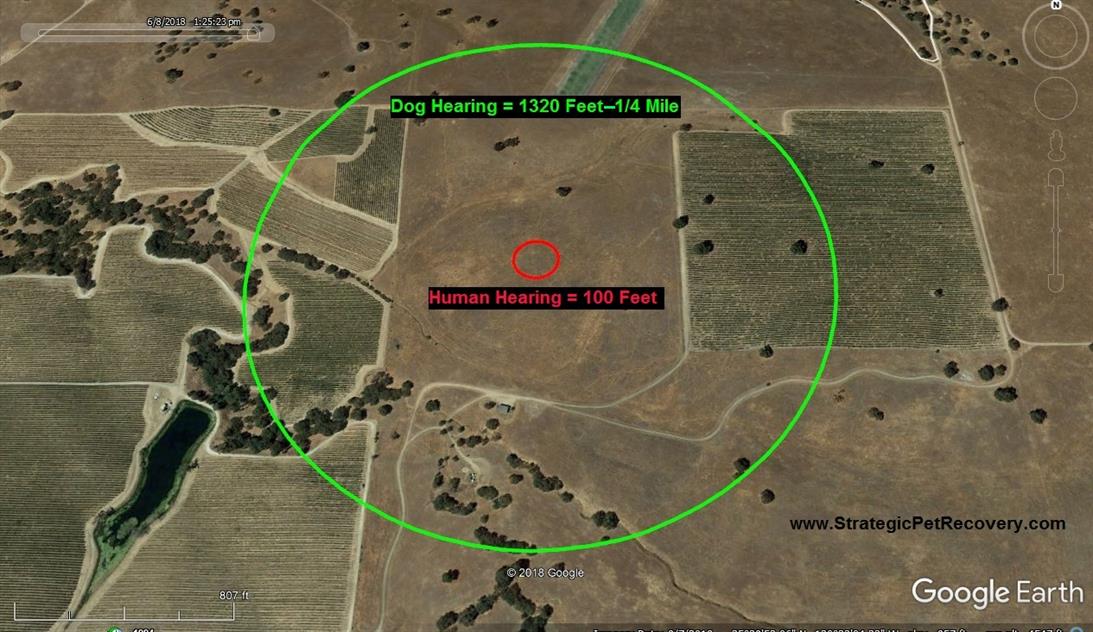Can You Hear Me Now?
Why You Should Never Yell For a Dog That's Missing
Shawn Dienhart, May 2019
A Dogs Ability To Hear
When a dog is missing, the natural inclination for the owner or unknowing searcher is to start yelling the dogs name. Sadly this is one of the worst actions to take and it only gets much worse if the dog is naturally skittish or has been missing for days or more.
A dog in good health can hear much better than a human, both in amplitude and range of frequency. The dogs DNA provides it hearing which surpasses the humans ability because of its ancestry to the wolf as a defense mechanism and to aide in hunting. While a domestic dog isn't going to be doing much hunting, its hearing does afford protections against anything it perceives to be a threat, including humans yelling its name.
By design, the anatomy of a dog is very adept to hearing sounds from great distances. The dogs ears are formed in such a way they can amplify sounds and can be rotated somewhat giving a directional capability. Once the dogs hearing is triggered, or when it is in a survival mode, its ears will raise up (dependant on breed) and locate the direction of the sound. If the dog is in its normal environment, inside a home or a backyard for example, it will process the sound as normal noises that aren't a threat or perhaps something new in which case it will likely bark until the perceived threat or noise is gone. However, if the dog is not in an environment that is neither routine or safe, its awareness to the surroundings is greatly heightened in which case the dogs hearing is on high alert.
Hearing On High Alert
When a dogs hearing is on high alert, it is in the defensive mode. It's instincts will cause it to seek safety rather than fight unnecessarily so it will naturally run the opposite direction from the sound. If it's already in a survival mode from being lost, it will even run from its loving owner calling out to it. This is a consequence of recognition bias - the dog cannot associate the sound of the owner in an unfamiliar place without further confirmation (smell and sight from being very near). When the dog is in high alert mode, calling for it serves no purpose whatsoever, except to scare it away.
Human vs. Dog Hearing Capability
In very basic terms, a dog can hear thirteen times better than humans, all else being the same. Studies have shown that dogs can easily hear sounds from over a quarter of a mile away, which is 1,320 feet. A human, on the other hand, can typically hear sounds from about 100 feet away. Obviously there are many dynamics and variables to the difference in hearing abilities, but that is not the point. The point is that a dog has superior hearing as compared to a human. So when looking or searching for a dog it is important to be quiet when walking and only calmly and quietly calling a lost dog when you are not moving. If you call out for a dog, it will hear your voice long before you get close to it, which means you will likely never see it because it has already run away from you in the opposite direction.
When you come to a full stop, and are using observation skills to search for a dog, only then say a few words and monitor for movement or motion of the dog which most likely has not moved far thanks to your quiet approach.



